Preparing for your Open House

Preparing for your Open House – we answer some artists’ questions
I’m planning on sharing costs of taking part in the AOH festival with my artists. What do the costs include?
If it’s the first time you’ve held an open house, you may feel slightly tentative about charging your guest artists. But, quite apart from the costs you will be incurring, you will also be undertaking the bulk of the work before, during and after the festival.
Before the May festival starts this may include going to trail meetings, if you join a trail, designing or organizing the design of house flyers and/or private view invites, plus arranging for and hosting the private view if you have one.
During the festival your house will experience a certain amount of wear and tear, even possibly necessitating the repainting of rooms, filling in nail holes etc. after the festival is over, as well as regular vacuuming and dusting throughout the festival period!
 Encounters Open House
Encounters Open House
All other costs are optional, but could include:
l AOH banner
l AOH bunting
l A private view, i.e. wine, soft drinks.
l A house publicity flyer (an e-flyer saves on print costs) l A website dedicated to your open house
l Wrapping and sales materials
Throughout the festival you will have the responsibility for overseeing visitor payments for artwork, arranging collection of artwork and for paying your artists after the event. In addition, you are effectively providing a gallery space and acting as agent for your guest artists, providing visitors with information about their work and helping to sell it.
Most houses charge around £50 per artist, depending on the number
of guest artists and the cost outlay. The fairest solution is to work out all your costs, e.g. listing fees, banner, private view, insurance, packaging, trail membership etc. and then divide this up between the number of artists taking part.
Most open houses also request a commission on sales of guest artists’ work. This is generally around 10- 15% on works sold. Guest artists are expected to help out with invigilation, so some houses operate a system whereby those who can’t, or don’t want to invigilate, pay an additional commission, e.g. 20 – 25% on sales.
It is a really good idea to make these charges as feedback suggests that gaining these, possibly small, amounts of profit from your artists’ sales, will work wonders in preventing any feelings of resentment occurring in very busy or stressful moments. And, remind yourself that you deserve some reward for your hard work and the opportunities you have provided for the other artists.
If you would like to invite artists to exhibit in your house but don’t know of any working in the media you would like to exhibit, you could try Houses Seeking Artists on the AOH website: https://artists-seeking-houses.aoh.org.uk
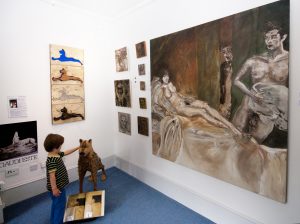 Encounters Open House
Encounters Open House
Curating my Open House – how do I allocate space to my guest artists and display their work?
How you choose to layout your show is really a decision of personal imagination and preference; one of the pleasures of opening your house is that you are the curator of your own house. Your may have definite ideas about how you would like to display the work – taking advantage of the ‘domestic’ nature of your house, and the ways it differs from a ‘white cube’ gallery space. You may decide to ‘theme’ your show and select your artists or their work accordingly.
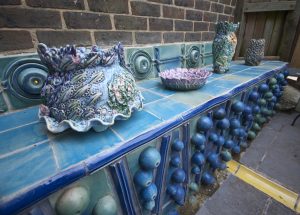 Ceramic House Open House
Ceramic House Open House
Deciding on a ‘house style’ is a good way to unite all the different work exhibited in your show. This can be done, for example, by brief information panels about each artist and maker, printed in a house style, being attached to the area where the artist’s work is displayed. Some houses ask their artists to send price lists of the work they will be exhibiting in advance, so that they can design uniform and co-ordinated labels for each piece of work on show.
Some houses ask their artists to hang their own work, others ask them to drop it off, in good time (perhaps a week before) and prefer to decide where all the work should go themselves. This can be advisable, helping to avoid clashes of style or disagreements around fairness of space allocation and gives you the opportunity to work out what would work best where.
Remember, when it comes to space allocation, it’s your house and you are the final arbiter!
 Cassette Lord Open House
Cassette Lord Open House
Invigilation – how do I divide up tasks?
First time open houses often rightly predict the fun elements of hosting an open house – the sociability, the pleasure of visitors engaging with the work – but are frequently unprepared for how exhausting being on public display, non-stop, for a whole weekend can be. Very occasionally a member of the public may make you feel uneasy. Having friends and guest artists to help out with invigilation is invaluable. Most people prefer to have at least one invigilator in every room that you have open to the public, as a precaution against mishap and theft (which, by the way, is a seemingly very uncommon occurrence). However, some think this can be a bit intimidating for visitors. Certainly, if you’re exhibiting small, expensive and easily re-moveable items, it’s a very good idea to make sure someone is nearby at all times.
The best way to carry out invigilation is to divide the weekends up into time slots – two per day – and then work out how many slots each of your artists will need to undertake. It is a good idea to suggest to your artists that, once the invigilation rota is agreed and fixed, if they have to change their slot at the last minute, they will need to contact another of your artists and arrange a swap with them. It’s a good idea for all your artists to have a copy of the invigilation rota and each other’s contact details, so that they can do this without involving you!
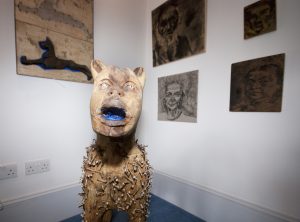 Encounters Open House
Encounters Open House
How should I ask visitors to pay for work they buy?
Easy to overlook the first time you open your house, but presenting itself as a necessity, often within the first few hours of opening, is a cash box. This can be improvised with an empty plastic container, but a proper cash box with lock and key is generally a good investment. You will also need to get some small change from the bank in advance – £5 notes are particularly useful as people often pay with £10 notes for small items.
Your will also need a sales book, listing all your artists’ names and carefully writing down all sales for each artist. If possible, it is also good to write down the name and contact details of visitors making the purchases – especially if they are large purchases. How you do this is up to you; some people allow separate pages for each artist and others just write down sales and artists’ names as they occur. Some artists, though, will ask for their payment pages at the end of the festival, both so that they have a list of their buyers details and also of their sales, to check for themselves that they have received the right payment from you and also so that they have the right information for their own accounts.
Some venues log sales using spreadsheet software, such as Microsft Excel, 24 to help them keep each artists’ payments separate and adding them up automatically through the festival. You can also then print out the payment sheets for different artists easily at the end of the festival.
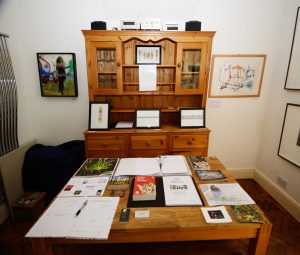 Cassette Lord Open House
Cassette Lord Open House
When paying for purchases in your Open House more and more people want to make payment by card and you may miss out on a sales if visitors are not able to make an instant payment. Most people will not have cheque books and frequently may not have sufficient cash on them.
We suggest using SumUp, which enables you to accept card payments using your smart phone. SumUp is an App that runs on your phone or tablet and charges a flat fee of 1.95% per transaction. The App can be downloaded to all Apple and most Android devices, with no additional hardware needed.
To use SumUp you simply follow 3 simple steps:
1 Download the app from Google Play or Apple iTunes Store
2 Sign up in 2 minutes
3 Start taking card payments anywhere, anytime within only 2 hours after signing up.
A chip&pin reader device is also available, into which the customer inserts their card and verifies their pin details. This costs £50 and will process: Visa, MasterCard, AmEx, Vpay and Maestro (Credit and Debit Cards). SumUp holds a licence as payment provider by the Financial Conduct Authority (FCA) and is absolutely secure.
If you prefer not to take card payments but you live near a cash machine, you can always point visitors in that direction, so that they can make their payment to you in cash. Otherwise visitors, who don’t have sufficient cash on them, will need to pay for larger pieces of work by cheque or leave a deposit.
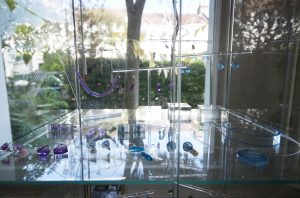
Should I keep bought work on display, for collection at the end of the festival or replace as we go along?
Whatever the method of payment, anyone buying a largish piece of work, will generally be asked to leave a small deposit of around 10% to secure the work. They will then need to return at the end of the festival to make the remainder of the payment and collect the work. Most open houses don’t allow large pieces of work to be collected before the end of the festival, as this will leave significant gaps in the show, plus it always looks good to have a sprinkling of red dots around the walls, which can help encourage other sales. However exceptions can occasionally be made if the visitor comes from far away and wont be returning to Brighton – and can pay cash! But you may prefer to arrange delivery of the work to them at the end of the festival. It is advisable not to let any expensive pieces of work be taken away until payments have been cleared by the bank.
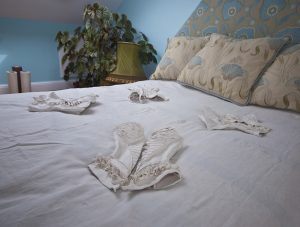 Ceramic House Open House
Ceramic House Open House
You may feel it is safest to handle all payment details yourself rather than hand responsibility to your guest artists – unless you have some artists exhibiting in your house who have expertise in handling large numbers of payments, sometimes under pressure if you are very busy. Jewellers and ceramicists frequently have more experience of this than fine artists! If anything goes wrong with the final sums, you will be the one who needs to work out where and ensure that in the end everyone is happy!
Do I need insurance?
It is a part of the Terms and Conditions, which must be agreed to when registering to take part in the Artists Open Houses festival, that all open houses take out public liability insurance. It is essential that you have public liability insurance when you have members of the public visiting your home or studio. If someone has a serious accident in your house, you could be sued for a great deal of money.
This type of insurance will generally cover public liability only, i.e. injury
to people visiting your house and not value of the work displayed. It is also possible for individual artists to take out their own insurance to cover possible loss or damage to their own work if they choose to.
We recommend taking out Pubic and Products Liability (PPL) insurance with the Artists Newsletter (a-n AIR) https://www.a-n.co.uk/about/insurance/ a-n AIR operates the only policy dedicated to artists and costs around £40 per year. This payment means you also automatically become a member of a-n. For artists, the policy will provide around £5m cover. There are a variety of options, so it’s worth taking a good look to check the details of what is covered, but here is some info:
In addition to the PPL and Professional Indemnity (PI) insurance included with a-n’s Artist membership, brokers Hencilla Canworth Ltd and a-n have developed the Artists’ Insurance Policy (AIP) for practising visual and applied artists wishing to buy additional insurance such as for artwork and materials, studio and contents, and employers’ liability. Members can choose from pre- priced ‘off-the-peg’ or bespoke options at highly competitive prices. Don’t try to add this to your household insurance
as it may invalidate it or raise your premiums astronomically .
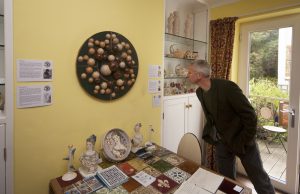 Ceramic House Open House
Ceramic House Open House
Promoting my Open House – what do I need to do?
AOH carries out a full social media and digital communications campaign throughout the year, including Twitter, Facebook, Pinterest and Instagram as well as a regular blog. AOH currently has 10,300 followers on Twitter, 3,400 on Instagram 540 on Pinterest, and over 3,100 Facebook followers.
It’s a great idea to set up your own Facebook and Twitter accounts and also to follow AOH on Twitter www.twitter.com/artistshouses and “like” the AOH Facebook page www.facebook.com/artistshouses Instagram www. instagram.com/artistsopenhouses and Pinterest https://www.pinterest. com/artistshouses/
This way information about the AOH festival and individual open houses taking part in it, increases exponentially throughout the city and beyond.
The AOH social media team is happy to include any interesting news angles on open house artists in their regular Tweets and festival blogs. If you have any open house artists’ news, contact:
Fiona (AOH Festival Manager) at: [email protected]
or Lisa (AOH Digi Comms Manager) at: [email protected]
And if there is anything really newsworthy happening in your house, let us know and we can forward the info to Bullet PR, our PR consultants, who may be able to provide coverage via local and national media outlets in print, online, radio and TV, as part of AOH’s regular and high profile PR campaigns.
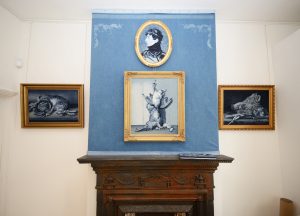 Gallery 40 Open House
Gallery 40 Open House
Any questions? Contact us at [email protected]
